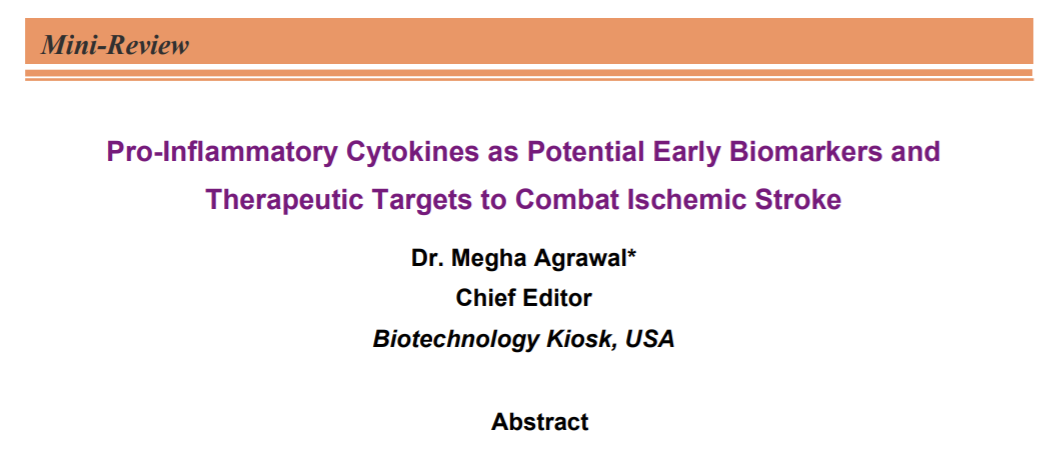
Ischemic stroke is a serious medical condition and widely considered one of the most common causes of death and disability in the world today. There have been notable research advances in stroke so far and studies have shown that stroke’s complex pathophysiology process involves the oxidative stress and inflammatory reaction. However, despite the progress in stroke research, currently there are no established biochemical factors available that can be employed in the early diagnostics and intervention in stroke. Mostly, stroke diagnosis is based on neuroimaging, which is not a rapid tool to diagnose stroke. This decreases the survivability rate. Further, conventional therapeutic approaches for ischemic stroke management are based on restoring blood flow to the affected brain area and these therapies are effective only during a limited time window. Hence, this procedure results in benefiting only a small percentage of patients. In view of these limitations, the ongoing research has focused on seeking alternative treatment methods that can reduce stroke brain damage and improve patients’ outcome. To this end, research goals are targeted towards gaining insights into the inflammatory response triggered by cerebral ischemia that is supposed to play an important role in the progression of stroke, and the subsequent study of inflammatory molecules in the acute phase of stroke. In this mini-review, we describe the inflammatory processes occurring during ischemic stroke along with the potential for pro-inflammatory cytokines to become stroke biomarkers as well as interesting neuroprotective therapeutic targets that could be blocked or stimulated to modulate inflammation after stroke. Finally, we present a perspective briefly discussing some viewpoints on future studies in the ongoing field of stroke research.
*E-Mail: meghaagra@gmail.com; megha@biotechkiosk.com
To cite this article: Agrawal M, Pro-Inflammatory Cytokines as Potential Early Biomarkers and Therapeutic Targets
to Combat Ischemic Stroke, Biotechnol. kiosk, Vol 2, Issue 11, PP: 5-19 (2020); DOI: https://doi.org/10.37756/bk.20.2.11.1